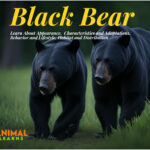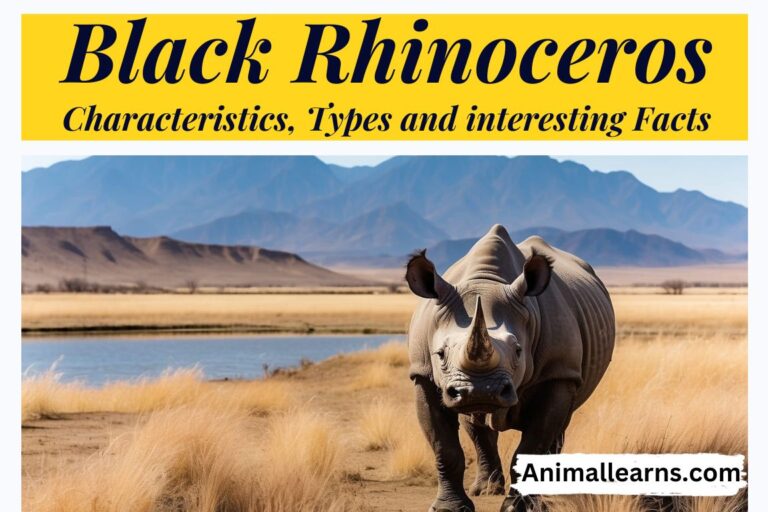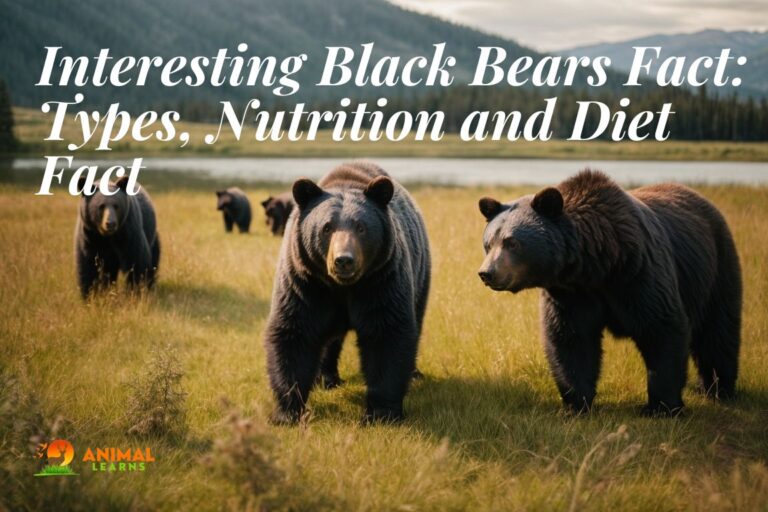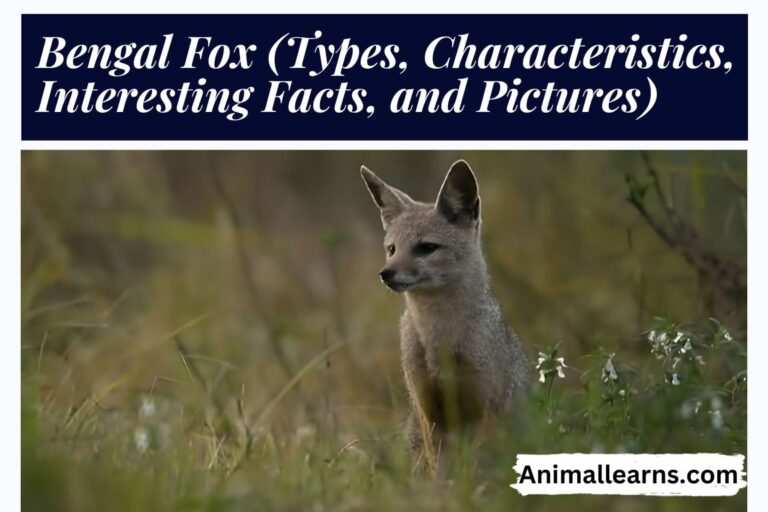Brown Bears: Diet, and Facts (With Pictures)
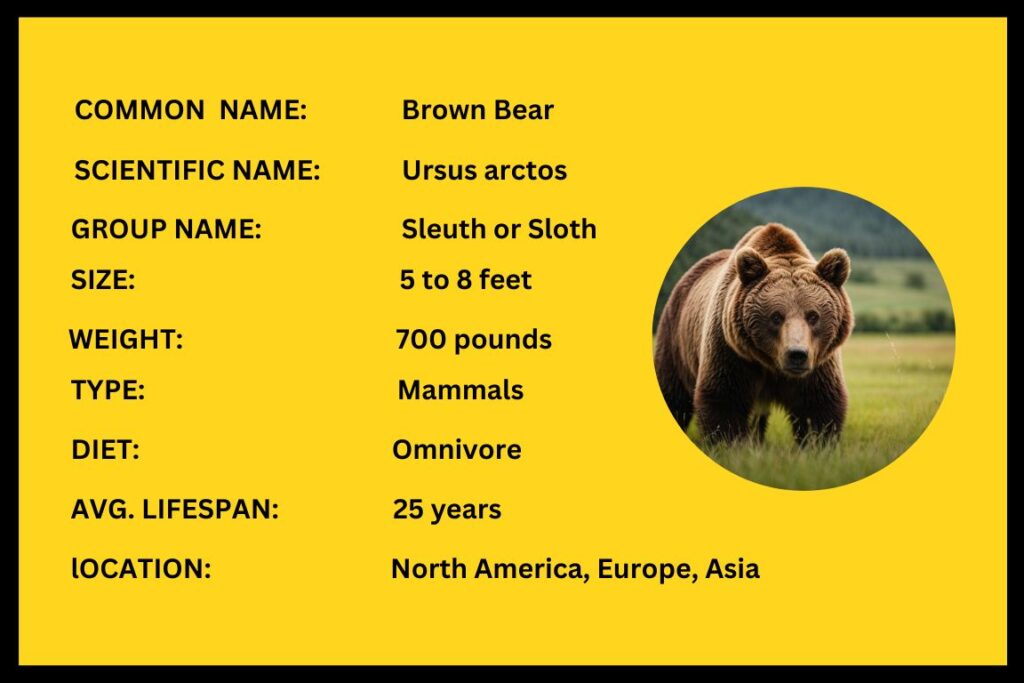
Brown bears are large mammals belonging to the Ursidae family, scientifically known as Ursus arctos. Black bears, brown bears, and grizzly bears are diverse members of the Ursidae family, showcasing variations in color, size, and habitat preferences. They inhabit forests, tundra, and mountainous areas throughout the Northern Hemisphere.
The brown bear exhibits sexual dimorphism, with males being much larger than females, thanks to its distinctive humped shoulders, powerful build, and prominent snout.
Occasionally, these omnivorous animals consume small mammals and fish, as well as vegetation, fruits, and insects. Bears hibernate during the winter months when food is scarce, reducing their metabolic activity.
The grizzly bear is a subspecies of brown bear found in North America. Their fur color can range from light brown to deep brown, giving them their common name.
Although brown bears are large and strong, they are often characterized by their solitary nature, with the exception of their mating season and cubs with mothers. In light of habitat loss, climate change, and conflicts between humans and wildlife, conservation efforts are essential for these magnificent creatures.
Size, Weight, and Height Of Brown Bears
Contents
- 1 Size, Weight, and Height Of Brown Bears
- 2 The Appearance of Brown Bears
- 3 Interesting Facts About Brown Bears
- 4 Characteristics Of Brown Bears
- 5 Life Cycle of Brown Bears
- 6 Habitat of Brown Bears
- 7 Diet of Brown Bears
- 8 Subspecies and Types of Brown Bear
- 9 Population
- 10 Social Systems
- 11 Brown Bear Vs Grizzly Bear
- 12 Predators
- 13 Mating
- 14 Diseases
- 15 How Fast Can Brown Bear Run?
- 16 Can Brown Bear Swim?
- 17 Challenges Faced
- 18 The Enigmatic Lives of Brown Bear: From Locomotion to Reproduction
- 19 FAQs
Male Brown Bear (Boar):
- Weight: Adult male bears typically weigh between 600 to 1,400 pounds (272 to 635 kg).
- Length: They can measure between 7 to 10 feet (2.1 to 3 meters) from head to tail.
- Height: Male brown bear (Ursus arctos) typically stands 3.5 to 5 feet tall at the shoulder when on all fours. When standing on their hind legs, they can reach an impressive 7 to 10 feet or more, depending on the individual and species. Bear sizes can vary across populations and regions, and these figures are general estimates.
Female Brown Bear (Sow):
- Weight: Adult female brown bear usually weigh between 300 to 700 pounds (136 to 318 kg).
- Length: They can measure between 5 to 7 feet (1.5 to 2.1 meters) from head to tail.
- Height: The height of female (Ursus arctos) on all fours ranges from 2.5 to 3.5 feet at the shoulder. When they stand on their hind legs, their height varies between 5 and 7 feet.
The Appearance of Brown Bears
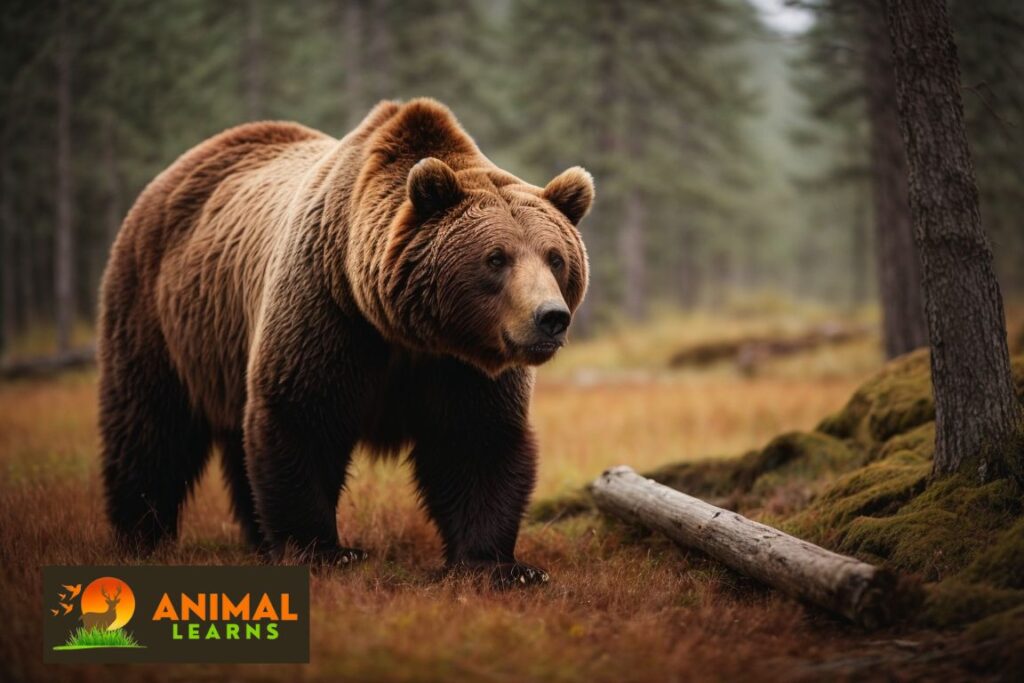
A brown bear is a large mammal known for its varied fur colors, including brown, black, and blond. A distinctive hump can be seen on the shoulders of adult males, while both sexes possess strong limbs and a robust build. They have unique facial profiles, small eyes, and rounded ears.
Their large, non-retractable claws help them dig and climb. They have large, non-retractable claws that help them dig and climb. The species’ size variation can be seen in coastal brown bears, such as those in Alaska, whose relatively long snout enhances their exceptional sense of smell.
Interesting Facts About Brown Bears
- Adaptable to a wide variety of habitats, They live in forests, tundra, and mountains throughout the Northern Hemisphere.
- The Rocky Mountains are home to many grizzly bear subspecies, including those with silver-tipped fur, a visual characteristic of the North American grizzly bear.
- There are a variety of sounds used by bears for communication, which include roars, growls, and huffs.
- These territorial animals use their acute sense of smell for navigation and food location and mark their territories with scratch marks on trees.
- To ensure their ecological roles and continued existence, they face habitat loss, climate change, and human conflict.
Characteristics Of Brown Bears
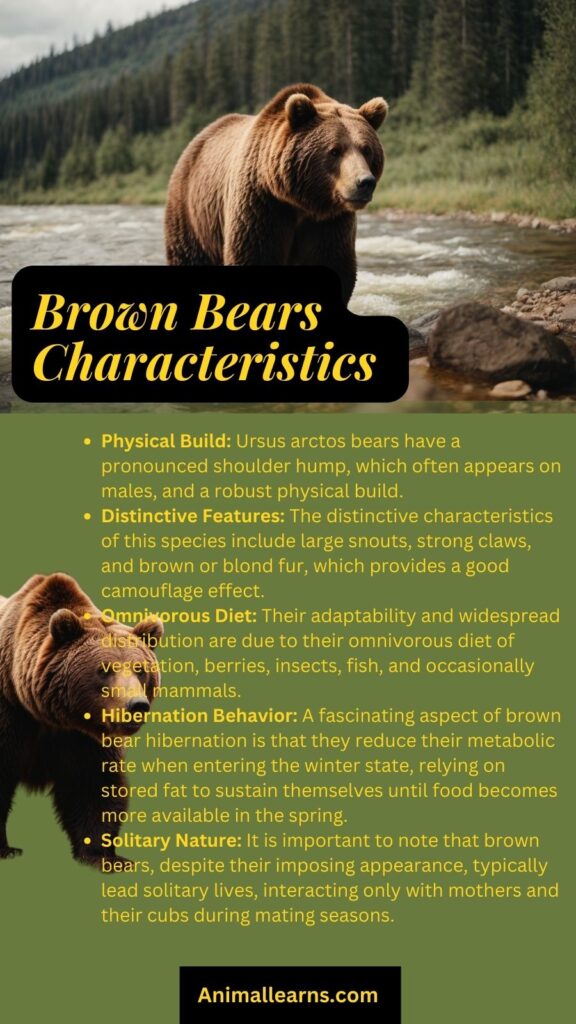
- Physical Build: Ursus arctos bears have a pronounced shoulder hump, which often appears on males, and a robust physical build.
- Distinctive Features: The distinctive characteristics of this species include large snouts, strong claws, and brown or blond fur, which provides a good camouflage effect.
- Omnivorous Diet: Their adaptability and widespread distribution are due to their omnivorous diet of vegetation, berries, insects, fish, and occasionally small mammals.
- Hibernation Behavior: A fascinating aspect of brown bear hibernation is that they reduce their metabolic rate when entering the winter state, relying on stored fat to sustain themselves until food becomes more available in the spring.
- Solitary Nature: It is important to note that they despite their imposing appearance, typically lead solitary lives, interacting only with mothers and their cubs during mating seasons.
Life Cycle of Brown Bears
The brown bear life cycle is an interesting one, encompassing several distinct phases. Cubs are born during hibernation in winter dens, then emerge in the spring, dependent on their mothers for nourishment and protection.
It takes years to mature, and sexual maturity varies according to factors like gender and environment. Maturity occurs through years of learning survival skills. In terms of resilience and ecosystem balance, they provide a testament to their habitats.
Habitat of Brown Bears
In addition to dense forests and mountainous regions, they can also tolerate arctic tundra, demonstrating remarkable adaptability.
In addition to shaping their ecosystems, these creatures contribute to seed dispersal and maintain a balance in prey populations. Their choice of habitat is often influenced by their seasonal availability of food resources.
Diet of Brown Bears
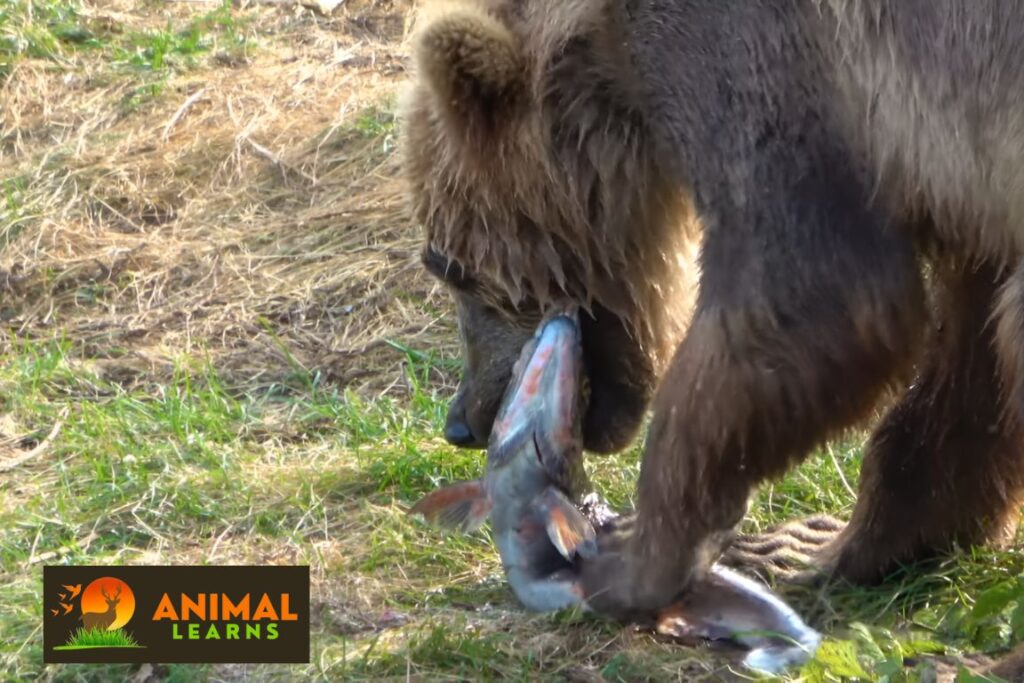
Insects, fish, and small mammals can occasionally be found on the diet of bears, which are omnivorous marvels. Because they are so adaptable, they can thrive in a wide variety of ecosystems, from dense forests to open tundra.
As a result, their dietary preferences may differ based on the season, demonstrating an impressive ability to adapt to available resources.
Subspecies and Types of Brown Bear
Brown Bears are classified according to their subspecies, each adapted to a particular region within the broader Ursus arctos group. With its distinctive hump and silver-tipped fur, the grizzly bear stands out among the other subspecies of the North American bear.
In addition, the Eurasian brown bear, a subspecies of the brown bear, contributes to the diversity of their habitats. It is useful to understand these subspecies in order to gain a deeper understanding of the ecological intricacies of different geographical locations.
Population
It is fascinating to study population dynamics in the animal kingdom, examining how various factors interact to determine species abundance. Birth rates, death rates, immigration, and emigration are all factors that play a role in the dynamics of animal populations. Population size and distribution are shaped over time by these factors, which provide insight into species resilience and ecological balance.
Social Systems
Animals have complex social systems, involving interactions, hierarchies, and affiliations. These systems often serve essential functions relating to survival, reproduction, and resource allocation, whether they are intricate social structures in primates or communal dynamics in pack animals.
As a result of studying social behavior, species learn how to navigate their environments and thrive within a network of social connections by employing different strategies.
Brown Bear Vs Grizzly Bear

| Aspect | Brown Bear | Grizzly Bear |
|---|---|---|
| Scientific Name | Ursus arctos | Ursus arctos horribilis (a subspecies of brown bear) |
| Size | Generally large; 7 to 10 feet (2.1 to 3 meters) in length | Similar to brown bear; size can vary regionally |
| Coloration | Can range from blonde to dark brown | Typically have a distinctive grizzled or “grizzly” appearance, with silver-tipped hairs |
| Hump | May or may not have a pronounced shoulder hump | Typically have a prominent shoulder hump, a characteristic feature |
| Behavior | Can be found in a variety of habitats, including coastal areas and forests | Often associated with inland habitats, such as mountains and tundra |
| Diet | Omnivorous, with a diet that includes berries, nuts, fish, and small mammals | Omnivorous, with a diet similar to brown bear; diet may vary based on location |
| Range | Widely distributed, with populations in North America, Europe, and Asia | Found in North America, particularly in the western part of the continent |
| Name Variations | Commonly referred to as “brown bear” | Often called “grizzly bears” in North America and “brown bear” elsewhere |
| Subspecies | Includes various subspecies such as the Kodiak bear and Eurasian brown bear | Considered a subspecies of the brown bear (Ursus arctos horribilis) |
In the vast realm of Ursidae, the terms “brown bear” and “grizzly bear” are often used interchangeably, leading to confusion. While all grizzly bears are, indeed, brown bear, not all they are grizzlies. Grizzly bears refer specifically to the North American subspecies of brown bear.
When considering the physical aspects, “brown bear height” and “brown bear size” play crucial roles. Bears, which include grizzlies, exhibit a wide range of sizes. Males can weigh between 600 to 1,400 pounds, showcasing their impressive stature.
However, the distinction between grizzlies and other brown bear becomes clearer when evaluating factors like location and specific physical traits.
Predators

The perpetual struggle for survival in the animal kingdom is exemplified by predatory interactions, a fundamental aspect of ecological interactions.
As predators and their prey evolve, population dynamics are shaped by predator-prey dynamics. Insights into the delicate balance that maintains biodiversity within ecosystems can be gained by studying predators’ behavioral adaptations and hunting strategies.
Mating
Evolutionary pressures drive successful reproduction, making mating behaviors a critical part of an animal’s life cycle. Evolutionary adaptations that contribute to species survival and genetic diversity are revealed through the study of mating behaviors, from elaborate courtship rituals to intricate displays of dominance.
Different species employ different reproductive strategies, which are influenced by the factors influencing mate selection and reproductive success.
Diseases
There are many diseases that can affect brown bear, black bears, and others including internal parasites such as tapeworms and roundworms and external parasites such as ticks and fleas. Their health may also be affected by viral infections, including influenza and Canine Distemper Virus.
Anthropogenic factors, including exposure to pollutants and consuming human food, are also concerns, including vector-borne diseases transmitted by mosquitoes and ticks.
Even though they are generally hardy, wildlife conservation efforts need to monitor and manage these disease risks to ensure brown bear populations’ well-being and sustainability, with geography and human-bear interactions influencing the prevalence of specific diseases.
How Fast Can Brown Bear Run?
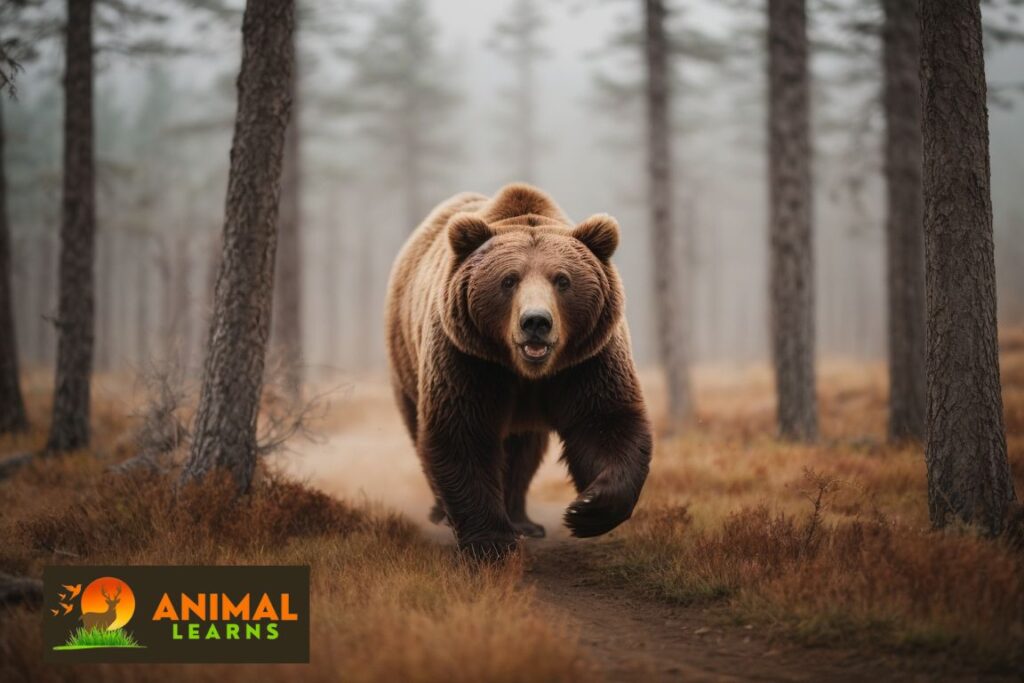
In comparison to their size, they are surprisingly fast runners. Although they can reach speeds up to 30 mph (48 kph) over short distances, their endurance in running is limited, and unlike some other predators, they cannot sustain high-speed pursuits for long periods of time.
Can Brown Bear Swim?
Brown bear can swim across rivers and lakes as a part of their foraging behavior, particularly during salmon migrations. As a result of their swimming abilities, they are able to reach a variety of habitats and seek out prey such as fish by using their swimming skills.
Challenges Faced
In the modern era, animals like brown bear, black bears, cheetahs, lions, foxes, monkeys, elephants, tigers, zebras, and kangaroos, face a wide range of anthropogenic challenges, ranging from habitat destruction and climate change to direct conflicts with humans.
In addition to fragmenting habitats and increasing conflict between humans and wildlife, human civilization poses a formidable threat to many species as it encroaches on natural habitats. Defining our planet’s biodiversity requires conservation efforts that address these challenges.
The Enigmatic Lives of Brown Bear: From Locomotion to Reproduction

Delving into the fascinating world of brown bear reveals a myriad of behaviors and adaptations. From the rugged landscapes of Alaska to the dense forests of Europe, “where do brown bear live” encompasses a diverse range of habitats.
Brown bear demonstrate remarkable adaptability, evolving unique characteristics over time. Whether it’s their powerful locomotion capabilities or the intricacies of their “brown bear aggressive behavior,” these adaptations are finely tuned to their environments.
Understanding “how brown bear reproduce” and “how often they mate” unveils the intricacies of their life cycle.
These insights help demystify the narratives surrounding the perceived danger of brown bear, shedding light on the coexistence of these majestic creatures with their ecosystems.
FAQs
What do brown bear eat?
Occasionally, small mammals, such as insects, are eaten by brown bear, who eat fruits, berries, nuts, and fish.
Do brown bear hibernate?
Yes, they are known for hibernating during the winter months, although the extent and duration of hibernation can vary depending on factors like food availability and climate.
Where do brown bear live?
North America, Europe, and Asia are all home to brown bear, who live in forests, tundra, and mountains.
Do brown bear hibernate?
A: Yes, brown bear hibernate during winter, when they have a reduced metabolic rate but are easily awakened.
Are brown bear dangerous to humans?
It is essential to follow bear safety guidelines when in bear country as brown bear generally avoid humans, but if surprised or threatened with their cubs they can be dangerous.






